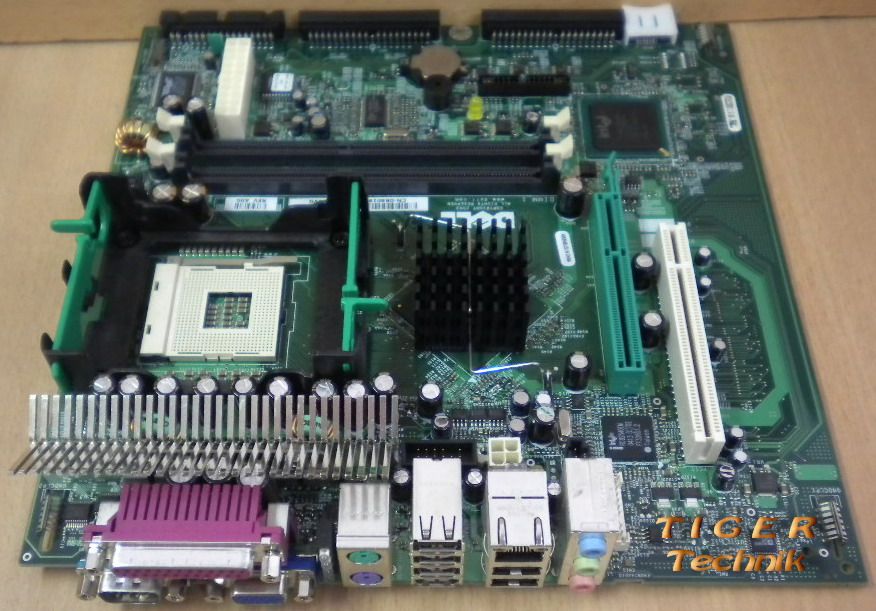

- #Dell optiplex 210l with pentium 4 cpu specs full#
- #Dell optiplex 210l with pentium 4 cpu specs windows#
These are divided into 3 banks, and each bank consists of four memory slots. So you must add memory two pieces at a time (they must be the same size and type of memory) in order for the system to benefit from the upgrade.ġ2 sockets (3 banks of 4) This indicates that there are 12 memory slots. These are divided into 4 banks, and each bank consists of two memory slots. So you must add memory two pieces at a time (they must be the same size and type of memory) in order for the system to benefit from the upgrade.Ĩ sockets (4 banks of 2) This indicates that there are 8 memory slots. These are divided into 2 banks, and each bank consists of two memory slots. So you can add memory one piece at a time for the system to use.Ĥ sockets (2 banks of 2) This indicates that there are 4 memory slots. These are divided into 3 banks, and each bank consists of one memory slot. So you can add memory one piece at a time for the system to use.ģ sockets (3 banks of 1) This indicates that there are 3 memory slots. These are divided into 2 banks, and each bank consists of one memory slot. :Ģ sockets (2 banks of 1) This indicates that there are 2 memory slots. A memory bank is a group of memory expansion sockets, a bank must be completely filled with memory modules of the same size and type in order for the system to recognize and address the memory. The Dell OptiPlex 210L has 2 memory expansion slots.

Running Core Temp or HWinfo should tell us exactly what we need to know and whether or not there are in fact the correct number of cores and hyperthreads being utilized.Memory Sockets or Slots are the place where memory RAM modules are inserted in the motherboard.
#Dell optiplex 210l with pentium 4 cpu specs windows#
Windows is notorious for misreporting memory and core functions on some older systems.

Yeah in hindsight it sounds ridiculous, that's why i said maybe a pipedream. Any hyperthreading CPU damaged enough for there to be a problem with the hyperthreading features, should simply not work at all or be entirely unstable.
#Dell optiplex 210l with pentium 4 cpu specs full#
Sorry, but that answer is full of fail and has no place in a conversation based on actual behavior of processors or their core functions. A "degraded" CPU would either be stable, or not, at whatever voltage, and entirely independent of whether or not HT was enabled. That's ridiculous and entirely unfounded. The CPU could've degraded so much overtime that the current voltages are not enough to support the excess strain put on the CPU. I know my processor has HT capabilities, but is there an issue with the motherboard or some other hardware? So what happened? Is my computer incapable of HT. Finally, I disabled the hyperthreading and my computer is working fine again. I restarted the computer a couple times and the same issue reoccurred. It happened with everything I tried to open. The 38HRF was compatible with both Intel Pentium and Celeron processors. The 38HRF is no longer manufactured or sold by Dell, but is available for purchase from several web vendors. The motherboard that came standard with this model was the 38HRF, also manufactured by Dell. I would click on chrome or IE and nothing would open. The OptiPlex GX150 was a desktop computer released by Dell in 2001. However, none of my programs would start up. I restarted the computer and then I noticed two core windows in the task manager and I thought everything was working. But shortly later I was prompted with a window telling me that new hardware has been installed and to restart the computer and I noticed something in the tray about a dual core processor being installed. Once I enabled it and started the computer I noticed that two "cores" weren't enabled, it was the same as before. I enabled hyperthreading on it which was disabled by default. I had a Dell Optiplex 210L with a 3.0 ghz Pentium 4 running windows xp lying around so I decided to tinker with it.


 0 kommentar(er)
0 kommentar(er)
